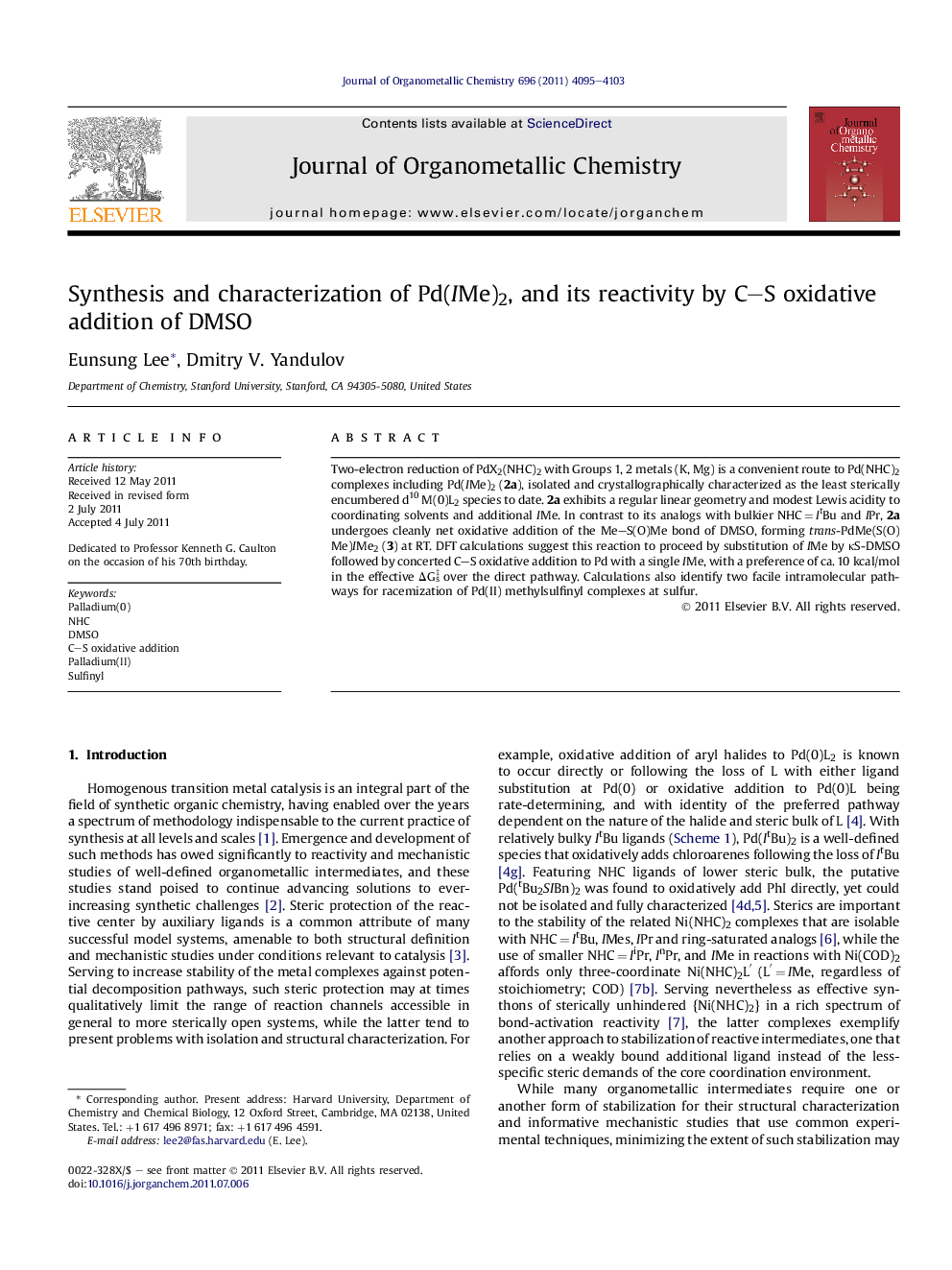| Article ID | Journal | Published Year | Pages | File Type |
|---|---|---|---|---|
| 1323614 | Journal of Organometallic Chemistry | 2011 | 9 Pages |
Two-electron reduction of PdX2(NHC)2 with Groups 1, 2 metals (K, Mg) is a convenient route to Pd(NHC)2 complexes including Pd(IMe)2 (2a), isolated and crystallographically characterized as the least sterically encumbered d10 M(0)L2 species to date. 2a exhibits a regular linear geometry and modest Lewis acidity to coordinating solvents and additional IMe. In contrast to its analogs with bulkier NHC = ItBu and IPr, 2a undergoes cleanly net oxidative addition of the Me–S(O)Me bond of DMSO, forming trans-PdMe(S(O)Me)IMe2 (3) at RT. DFT calculations suggest this reaction to proceed by substitution of IMe by κS-DMSO followed by concerted C–S oxidative addition to Pd with a single IMe, with a preference of ca. 10 kcal/mol in the effective ΔGs‡ over the direct pathway. Calculations also identify two facile intramolecular pathways for racemization of Pd(II) methylsulfinyl complexes at sulfur.
Graphical abstractPd(IMe)2 is no longer just a computational model for the analogs with bulkier NHC ligands: readily available from a two-step synthesis and fully characterized, it exhibits unique C–S oxidative addition reactivity with DMSO whose mechanism has been investigated computationally.Figure optionsDownload full-size imageDownload as PowerPoint slideHighlights► Two-electron reduction of PdCl2IMe2 yields Pd(IMe)2 uniquely unhindered sterically. ► Pd(IMe)2 oxidatively adds Me–S(O)Me bond of DMSO at RT, expanding a minimal precedent. ► DFT suggests C–S oxidative addition to occur in Pd(DMSO)IMe, not directly to Pd(IMe)2.
